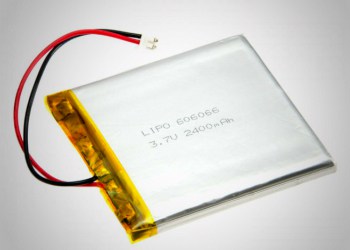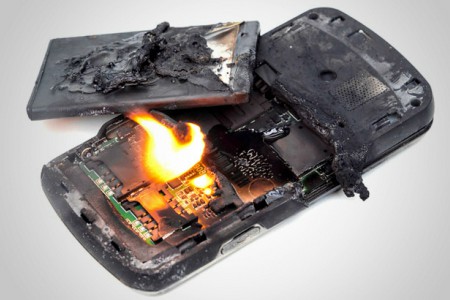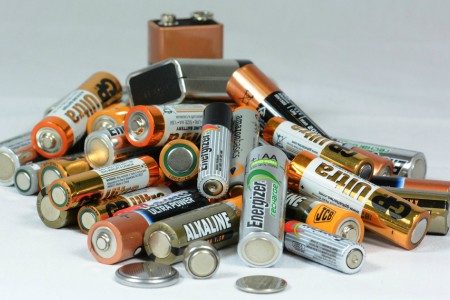How to safely ship lithium-ion and other batteries internationally including understanding restrictions, prohibitions and suitable packaging
When you are shipping your personal effects and household goods overseas it is quite likely that you’ll also need to send some items with batteries.
This can raise quite a few questions as there can be restrictions on shipping batteries overseas, especially by air, due to their hazardous nature. There is a lot of misinformation and incorrect guidance on forums surrounding batteries or devices which contain batteries, lithium-ion or otherwise. Many people will tell you that you cannot ship them.
However, you are permitted to ship batteries by both air and sea freight, but you must follow the respective guidelines.
 This guide has been written to address this issue and give clear and correct advice about sending lithium and lithium-ion batteries abroad no matter whether by air freight or sea freight. It also discusses how you need to prepare and pack your batteries – or devices containing batteries.
This guide has been written to address this issue and give clear and correct advice about sending lithium and lithium-ion batteries abroad no matter whether by air freight or sea freight. It also discusses how you need to prepare and pack your batteries – or devices containing batteries.
It is important to note that there are different regulations when sending them by air or by sea freight, so pay attention to these differences depending on your situation.
NB: Whilst you can ship batteries in unaccompanied luggage, we recommend that wherever possible you take them with you as hand luggage. Although this is usually not a problem for items such as laptops and mobile phones, it may not be practical for tradespeople shipping power tools and other items.
The dangers of shipping batteries were highlighted again as a Virgin Atlantic flight was forced to make an emergency landing in Boston due to a power bank catching fire in the cabin. Fortunately, as it was carried as hand luggage it was quickly noticed and disaster averted. In another instance, a mobile phone fell down the side of a passenger seat and caught fire on a Qantas flight from Los Angeles to Melbourne.
In fact, airlines and shipping companies take safety so seriously that they are looking into the use of dog detection teams specially trained to find lithium batteries. It is important, therefore, that your air or sea freight shipments comply with the latest regulations and guidelines.
The rules for shipping batteries by air or sea are becoming stricter, vary depending on individual carriers and are subject to change. We, therefore, recommend you check with your airline, courier or shipping company before you send them.
Contents
A Brief Background on Batteries
All batteries are considered hazardous and are classed as dangerous goods when shipping by air or sea and so have certain restrictions.
There are two main types of batteries. On the one hand, lithium metal batteries are the type of batteries that are your everyday non-rechargeable e.g. AA or AAA size. Most people relocating overseas can avoid all issues by simply not taking these batteries with them and buying new ones upon arrival. However, this easy way out is not afforded to those who want to transport the second main type of battery, a lithium-ion battery.
Lithium-ion batteries are often found in small electric devices such as smartphones, cameras, some gardening tools and laptops. They are manufactured with slightly different materials, but the significant difference is that they are rechargeable.
These batteries are often made specifically for the device they are found in and can be costly to find replacements. Thus, these batteries and their devices are what most relocators will want to take with them to their new country.
 Lithium-ion batteries are highly flammable and if they are exposed to high temperatures they are prone to overheating and this can potentially lead to an explosion. When shipping batteries abroad they may well be subject to hot and humid conditions and so are subject to regulations because they can present a risk of fire.
Lithium-ion batteries are highly flammable and if they are exposed to high temperatures they are prone to overheating and this can potentially lead to an explosion. When shipping batteries abroad they may well be subject to hot and humid conditions and so are subject to regulations because they can present a risk of fire.
Although the risk is very small, due to the vast number of items and gadgets shipped with batteries – everything from Xboxes to laptops, drones to Segways, there have been incidences where fires have occurred so it can’t be taken lightly.
For more advice on shipping batteries and other belongings overseas visit our box shipping and luggage shipping guides.
How to Ship a Battery Internationally
If you need to know how to ship a battery overseas then you need to be aware that different rules and legal requirements apply depending on your chosen method of shipping. Below we have compiled the things you need to be mindful of when choosing to ship your batteries internationally by sea or by air freight. Our guidance is in regard to standard lithium metal batteries, lithium-ion batteries and devices housing lithium-ion batteries.
Similar guidelines apply no matter whether you’re shipping batteries within Europe or Worldwide.
How to Ship Batteries Overseas by Sea Freight
The following regulations apply when you are relocating possessions, including batteries, in a shipping container. This also includes a shared shipping container – often referred to as groupage.
Shipping Standard lithium metal batteries by sea
 When you need to send regular lithium metal batteries such as AA or AAA batteries, you need to send them in a hard plastic casing.
When you need to send regular lithium metal batteries such as AA or AAA batteries, you need to send them in a hard plastic casing.
On the whole, it is not recommended to transport these batteries overseas because the risks outweigh the costs. They are more likely to corrode or leak in damp and humid conditions – especially if they are partly used.
Lithium-ion Batteries
These commonly used rechargeable batteries can be sent by sea freight but they MUST be removed from the appliance or placed in a hard and sealed case.
Shipping Power Tools By Sea
 You can send your power tools such as drills and electric screwdrivers with their batteries if they are kept in a hard container. However, they need to be removed from the device.
You can send your power tools such as drills and electric screwdrivers with their batteries if they are kept in a hard container. However, they need to be removed from the device.
There are no restrictions on the number of batteries you can keep in each box.
How to Ship Batteries Overseas by Air Freight
Stricter regulations from International Air Transport Association (IATA) apply to ship batteries by air as there are increased risks in the event of a fire.
We, therefore generally advise NOT shipping batteries in unaccompanied luggage by air freight.
Note, when travelling by air you are usually required to keep them in your hand luggage and are not allowed batteries in your checked-in luggage. You should consult your airline and airport about the rules for carrying batteries with you onto the plane.
Here are the guidelines you need to follow when sending batteries overseas as part of your unaccompanied personal effects in the cargo hold of an aircraft.
Shipping Standard Lithium Metal Batteries By Air
When sending everyday lithium metal (non-rechargeable) batteries by air freight, you must send them inside the product they work in. For example, if you send your TV remote and choose to send your current half-used AAA batteries as well, the batteries must be sent inside the TV remote.
This differs from sending lithium batteries by sea freight because you cannot send them packed separately.
However, as previously stated, these have a greater danger of leakage, so it would be best to purchase new ones on arrival.
You cannot send loose spare lithium metal batteries by air freight.
Lithium-ion Batteries By Air
Sending lithium-ion batteries by air freight is similar to the rules you must follow when sending lithium batteries by sea freight. You can choose to send them inside their respective devices, or you can send them separately in a container with a hard case.
However, there is one significant difference that you must be aware of. You need to find out the watt-hours rating of the lithium-ion battery, which can be located on the battery itself or by contacting its manufacturer. Watt-hour ratings indicate how much power the battery can produce in one hour. To transport a lithium-ion battery in a hard case, it must have a rating below 100 watts per hour. You can also only send a maximum of 4 by air, with a maximum of 2 per package.

Power Banks
 Power banks and power/battery packs used to recharge mobile phones/tablets etc. are classed as batteries and cannot be sent in the cargo hold of planes.
Power banks and power/battery packs used to recharge mobile phones/tablets etc. are classed as batteries and cannot be sent in the cargo hold of planes.
You will need to take them as carry-on luggage.
Shipping Power Tools By Air
Sending batteries along with power tools requires you to send them attached to the device or in a hard case.
Again no pack can contain more than two and no consignment can contain more than four.
Prohibited for shipment by Air
In summary, all lithium-ion cells and batteries, as well as lithium metal cells and batteries, are prohibited from being shipped by themselves in the cargo hold so cannot be sent as unaccompanied luggage.
Shipping Defective, Damaged or Faulty Batteries
Simply do not!
Damaged or faulty batteries can potentially be very dangerous and pose an increased chance of causing fires and risking health and safety. Under no circumstances, therefore, should you try to ship any type of battery by air or sea freight that is known or suspected to be defective.
If your battery tends to overheat or shows signs of bulging, swelling or corrosion/leakage, don’t ship it as they can be very hazardous.
How to safely pack lithium batteries for transport
One of the major risks associated with the transport of batteries and battery-powered equipment is short-circuiting of the battery as a result of the battery terminals coming into contact with other batteries, metal objects, or conductive surfaces.
Therefore, batteries need to be packed and shipped separately to prevent short circuits and damage to terminals.
This can include:

- Keeping batteries in their device/equipment
- Using a strong, rigid outer packaging
- Packing each battery or each battery-powered device when practicable, in fully enclosed inner packaging made of non-conductive material (such as bubble wrap).
- Separating or packing batteries to prevent contact with other batteries or conductive materials.
- Ensuring exposed terminals or connectors are protected with non-conductive caps and nonconductive tape.
- If not impact resistant, the outer packaging must not be used as the sole means of protecting the battery terminals from damage or short-circuiting.
- Batteries should be securely cushioned and packed to prevent shifting, which could loosen terminal caps or reorient the terminals to produce short circuits.
- Packaging the battery/batteries in rigid plastic packaging.
Types of batteries you can ship as long as you pay attention to safety requirements
- Lithium Batteries
- Lithium-ion (Li-ion) batteries
- Lithium polymer batteries
- Lipo batteries
- Nicad batteries
- NiMH batteries
- Non-spillable
- Dry Batteries
- Button batteries
- Lead acid batteries
- Car and motorcycle batteries
Get Help Shipping Your Possessions Overseas
If you have any questions about shipping your electronics and batteries or indeed any other items, please contact our team at PSS International Removals who will be happy to help.
We offer a range of shipping services, from shipping a few boxes by air or sea to complete household removals with your own dedicated shipping container.






